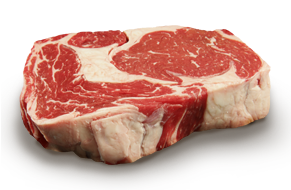

- What is industrially produced trans fat?
- How is industrially produced trans fat formed?
- Why is industrially produced trans fat harmful to health?
- Which foods are most likely to contain a source of industrially produced trans fat?
- What is naturally occurring trans fat?
- Is naturally occurring trans fat as harmful to health as industrially produced trans fat?
What is industrially produced trans fat?
A type of dietary fat that is harmful to our health.1
How is industrially produced trans fat formed?
Industrially produced trans fats can be formed through several industry processing methods:
- Partial hydrogenation, a process used to change liquid oils into semi-solid and solid fats. This method creates the majority of industrially produced trans fat in the Canadian food supply.
- Commercial refinement of some liquid vegetable oils such as canola, soybean and fish oils causes a small amount of industrially produced trans fat to form.2
- Deep-fat frying can create a small amount of industrially produced trans fat if oils are not used properly (0.2 – 1% of total fat content). This can be kept to a minimum if fry oil is used at appropriate temperatures and within its lifespan. See Guidelines for Deep Fryers and Frying Oil.
- The BC trans fat regulation restricts industrially produced trans fats that are formed by the partial hydrogenation process only.
Why is industrially produced trans fat harmful to health?
Trans fat increases the risk of heart disease more than any other type of dietary fat. Trans fat not only raises LDL (bad) cholesterol, but also lowers HDL (good) cholesterol, both of which are strongly associated with heart disease.3 A high consumption of trans fat is responsible for an estimated 3,000 deaths from heart disease every year in Canada.4
Which foods are most likely to contain a source of industrially produced trans fat?
Food that has “hydrogenated," “partially hydrogenated," “margarine”, or “shortening” as an ingredient may contain industrially produced trans fat.
These are typically found in:
- Cooking and frying
- Fry oils
- Pourable and solid shortenings
- Margarine
- Baking
- Vegetable shortening
- Baking margarine
- Liquid cake shortening
- All-purpose shortenings
- Roll-in shortenings
- Doughnut fry shortening
- Cake, cookie and muffin mixes
- Icings and whipped toppings
- Frozen dough and pie crusts
- Canned fillings and fudge base
- Chocolate chips, sprinkles and other candy add-ins
- Compound coatings and wafers
- Ready-made foods
- Pre-baked food:
- Cookies
- Cakes & Doughnuts
- Pies
- Tortilla wraps
- Bread crumbs and croutons
- Pre-fried food:
- Egg rolls
- French fries
- Asian noodles
- Onion rings
- Fish sticks
- Chicken nuggets/burger
- Taco shells
- Potato, corn or tortilla chips
- Other:
- Nacho cheese sauce
- Non-dairy creamer
- Garlic or fat spreads
- Packaged Gravy
- Pre-baked food:
What is naturally occurring trans fat?
Naturally occurring trans fat is made by bacteria in the stomach of ruminant animals such as cows, sheep, goats, bison, and deer. It is found in small amounts in the meat of these animals and dairy products such as milk, cheese and butter.
Is naturally occurring trans fat as harmful to health as industrially produced trans fat?
Several studies have found that the consumption of naturally occurring trans fat does not have the same harmful effect to heart health as industrially produced trans fat.5, 6, 7 However, meat and dairy products are often high in saturated fat, which can lead to high blood cholesterol, a risk factor for heart disease. Canadians can lower their risk of heart disease by choosing lower fat dairy products and lean meats according to Eating Well with Canada’s Food Guide.

- 1TRANSforming the Food Supply. Ottawa: Minister of Health; 2006.
- 2Health Canada website
- 3TRANSforming the Food Supply. Ottawa: Minister of Health; 2006.
- 4“Estimates based on Harvard School of Public Health data found in the following study: Ascheria A, Katan MB, Zock PL, Stampfer MJ, Willet WC. Trans fatty acids and coronary heart disease. NEJM 1999;340(25): 1994-8.”
- 5 Brouwer IA, Wanders A J, Katan MB. Effect of animal and industrial trans fatty acids on HDL and LDL cholesterol levels in humans - a quantitative review. PloS ONE. 2010; e9434, 5(3): 1-10.
- 6 Uauy R, Aro A, Clarke R, Ghafoorunissa R, L'Abbe M, Mozaffarian D, Skeaff M, Stender S, Tavella M. Review. WHO Scientific update on trans fatty acids: summary and conclusions. European Journal of Clinical Nutrition. 2009; 63: S68-S75.
- 7 Food and Nutrition Board, Institute of Medicine of the National Academies (2005). Dietary reference intakes for energy, carbohydrate, fiber, fat, fatty acids, cholesterol, protein, and amino acids (Macronutrients). National Academies Press. pp.i. www.nap.edu/openbook.php?isbn=0309085373


